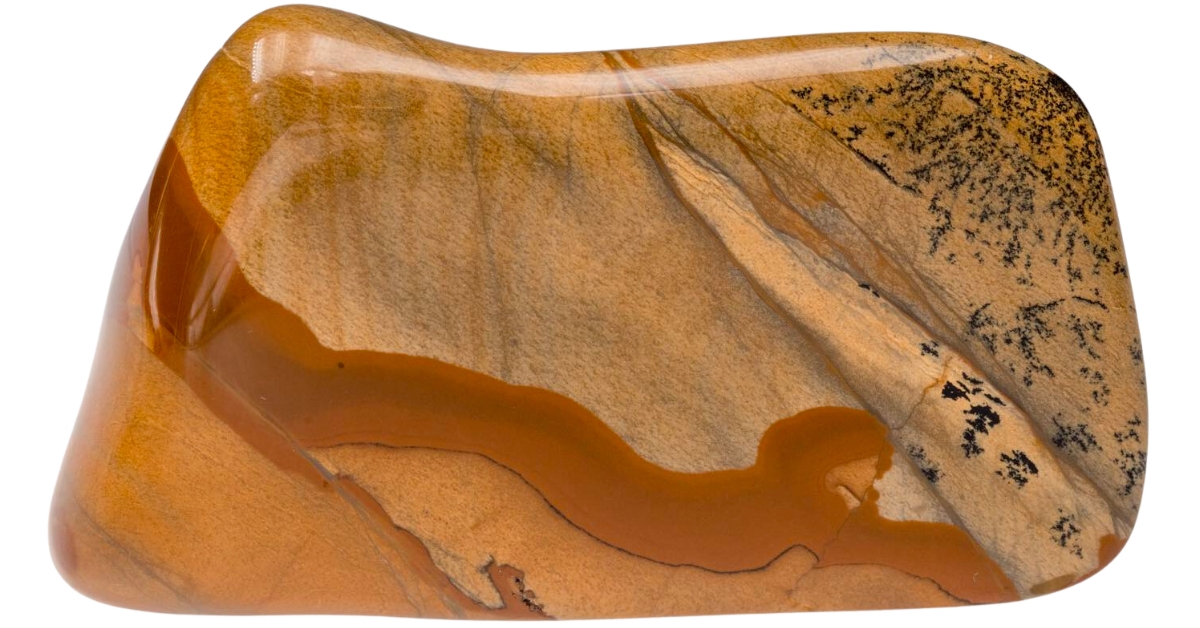When we talk about what jasper looks like, think of an artist’s canvas painted with nature’s most vibrant hues— from deep reds and forest greens to sunny yellows and ocean blues. Sometimes, jasper even has patterns that look like landscapes!
This amazing gem forms from volcanic ash or sediment, which gets mixed with silica over time. This mixture hardens into the jasper we find and treasure today.
There are so many types of jasper, each with its own special look and story. For example, there’s red jasper, known for its deep, fiery color. Then there’s ocean jasper, with patterns that remind you of the swirling waves of the sea.
Join us as we dive deeper into the different types of jasper, exploring what makes each of them special and distinct from the rest. By the end of this article, you’ll have a renewed sense of appreciation for this natural wonder.
The 31 Different Types Of Jasper And What They Look Like
Exploring the different types of jasper is like going on a treasure hunt. From deep underground to the surfaces of ancient rivers, it forms in environments as varied as its appearances.
The value of jasper isn’t just in its variety of colors and patterns, but also in the stories each type holds.
Red Jasper
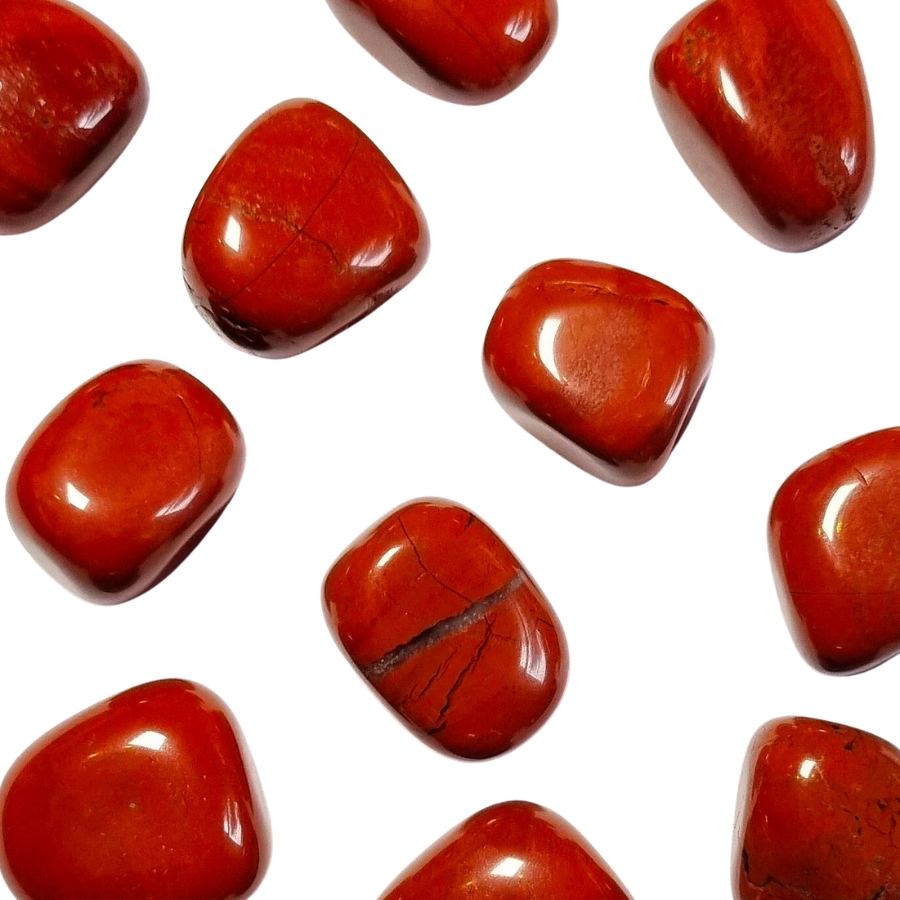
Red Jasper stands out with its striking deep red color, often highlighted by patterns of darker streaks or spots.
Its vibrant hue comes from iron oxide, which mixes with chalcedony, a type of quartz, as the stone forms.
The value of red jasper goes beyond its bold appearance. It’s also known for its durability, making it a popular choice for jewelry and decorative items that can last for ages.
Its unique color and patterns mean no two pieces are exactly alike. This distinctiveness has made red jasper a favorite for artistic and ornamental uses, from intricate carvings to eye-catching pendants.
Where you can find red jasper
Among the notable spots where you can find jasper include the deserts of California, Arizona, and Oregon. It’s also found in locations like Germany, Russia, India, and Brazil, adding to its global appeal.
These places are typically areas with volcanic or sedimentary activity, which are ideal for forming red jasper.
To help you find jasper near you, check out this guide that we created.
DON'T MISS OUT ON ANY GREAT FINDS!
While you're out searching you're going to find A LOT of other interesting rocks and minerals along the way. The last thing you want to do is toss out something really interesting or valuable. It can be easy to misidentify things without a little guidance.
You absolutely need a good reference guide in order to understand what you're looking at!
We've put together a fantastic field guide that makes identifying 140 of the most interesting and valuable rocks and minerals you will find REALLY EASY. It's simple to use, really durable, and will allow you to identify just about any rock and mineral you come across. Make sure you bring it along on your hunt!
Now, back to the identification specifics:
Ocean Jasper
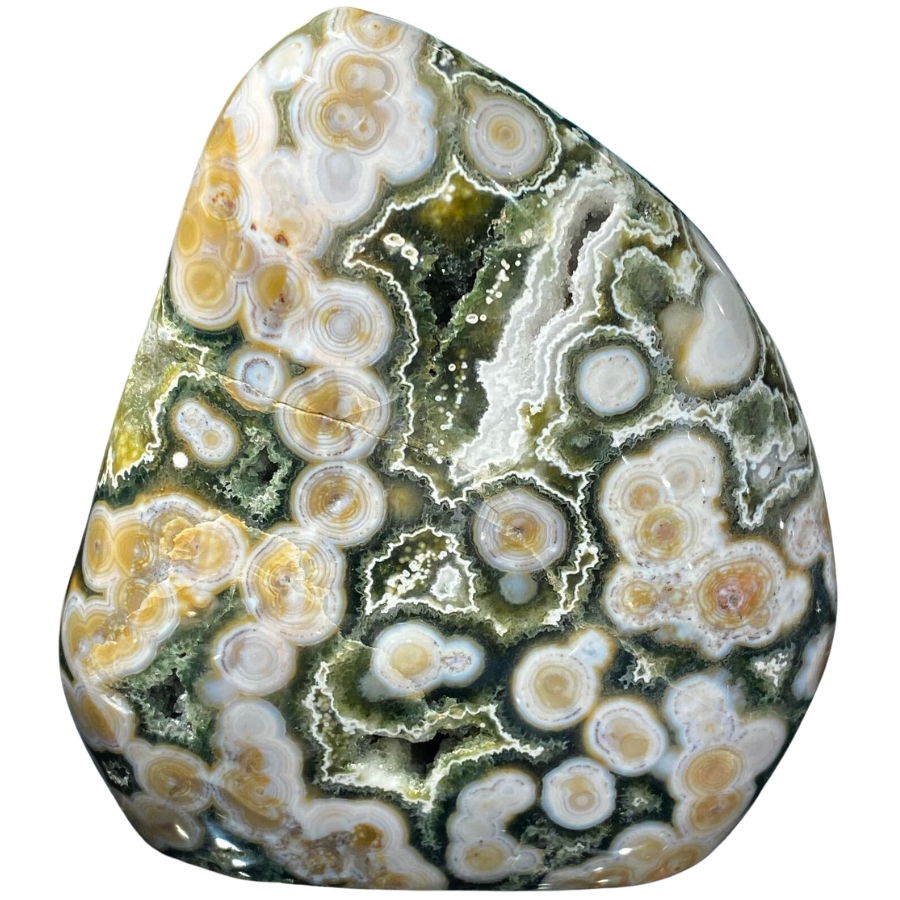
Known for its unique circular patterns that look like tiny, swirling galaxies or foamy ocean waves, ocean jasper was only discovered at the turn of the 21st century, making it a relatively new gemstone.
Its colors are a vibrant mix of greens, pinks, whites, yellows, and even blues, all blending together.
The variety of minerals present during its formation is what gives ocean jasper its wide range of colors and designs.
The price of ocean jasper can vary quite a bit. It’s often more expensive than other types because it’s rarer and in high demand for its beauty.
Where you can find ocean jasper
Ocean jasper isn’t found just anywhere. Its most famous and main source is along the rugged, coastal shores of Madagascar, an island nation off the southeast coast of Africa.
If you need guidance on where to go rockhounding for similar-looking stones to ocean jasper, you may refer to our article.
Picture Jasper
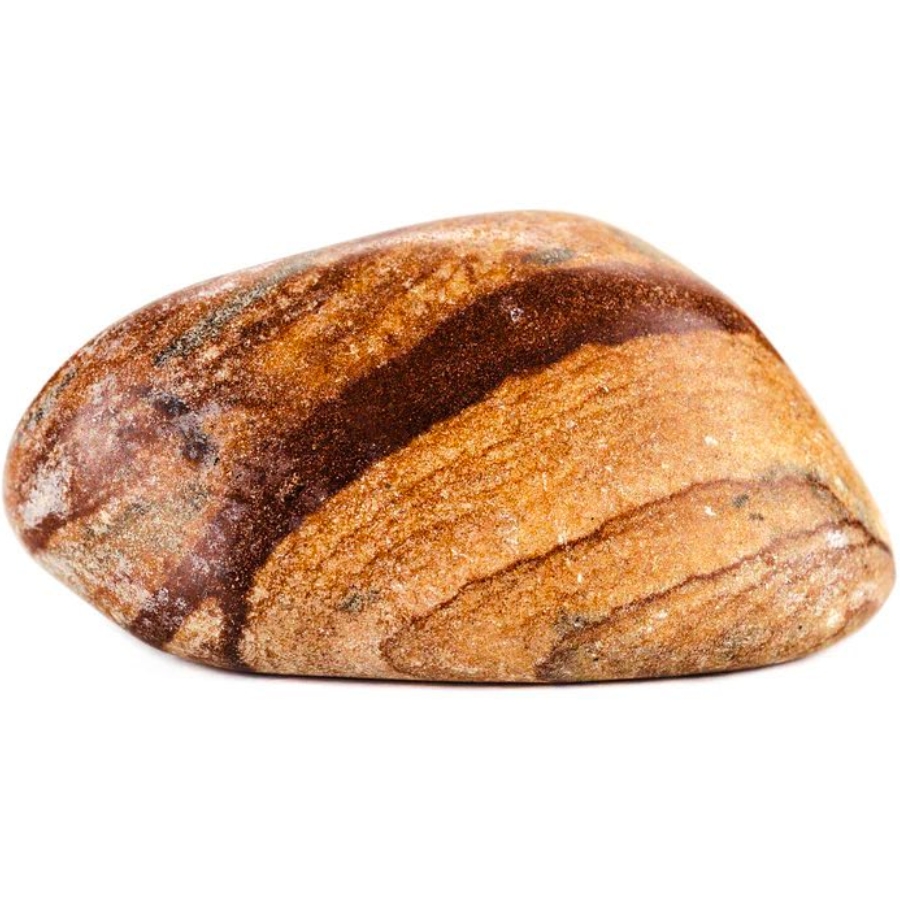
Picture jasper displays a unique, picturesque scene. Its patterns often resemble landscapes with hills, valleys, and horizons, in earthy tones of brown, tan, cream, and even some reds or greens.
Its patterns are created by the flow and sedimentation of ancient rivers and mud.
This process, known as silicification, preserves the original patterns of the sediment, turning them into stunning, picture-like designs.
Some people believe it can help with meditation and visualization. They say that the scenes in the stone can inspire and ground the viewer, providing a connection to nature.
Where you can find picture jasper
Picture jasper is found in a few key places where the conditions were just right for its formation. In the USA, one of the most famous spots for it is Oregon. The high desert regions of the Pacific Northwest are ideal for this kind of jasper to form.
Interested to know more about mining crystals? You can use our helpful guide about it.
Yellow Jasper
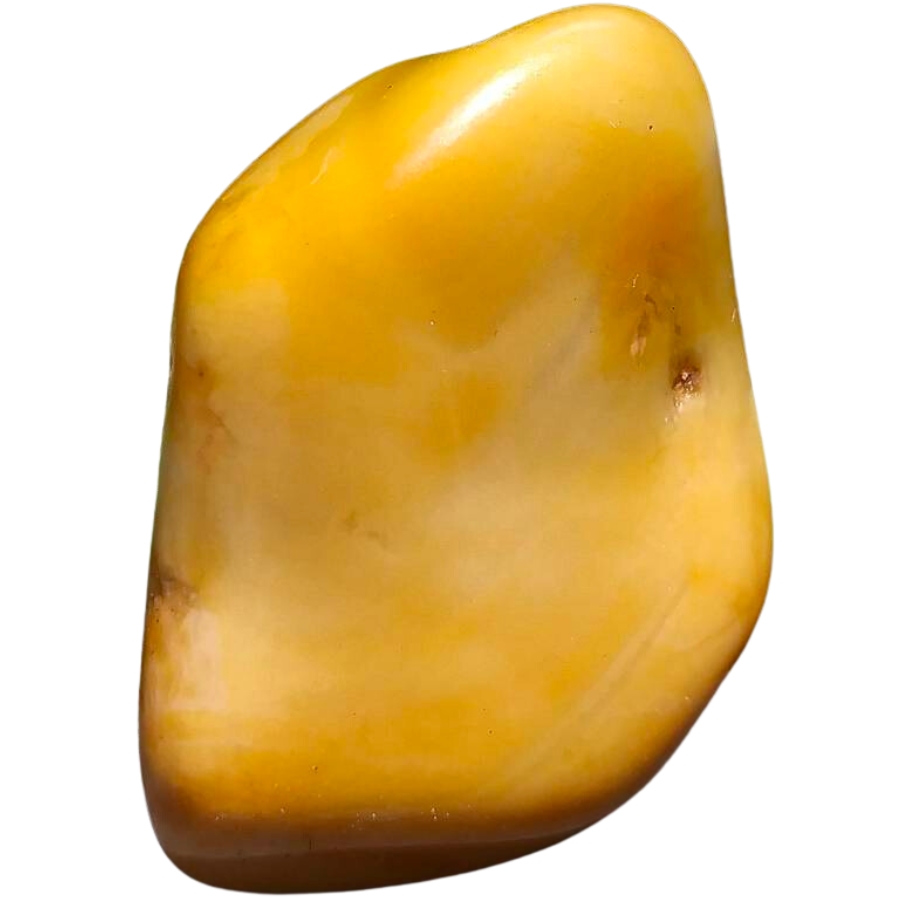
Yellow jasper glows with shades of sunny yellow, mustard, and sometimes hints of gold.
This bright color comes from iron oxide, which mixes with silica, the main ingredient of jasper.
What makes yellow jasper distinct is its solid, uniform color, which is less common in jaspers. Most types have a mix of colors and patterns, but yellow jasper often has this consistent, vibrant yellow.
In ancient times, yellow jasper was believed to protect travelers, especially at night. So, it wasn’t just a pretty stone, but also a kind of ancient travel buddy!
Where you can find yellow jasper
Lucky for you, yellow jasper can be found in several places around the world. The states of California and Oregon are known for their deposits of this gem. Also, Brazil, South Africa, and Russia are known to have yellow jasper.
If you need a bit of help in finding gems near you, we created a handy guide for you.
Black Jasper (Basanite)
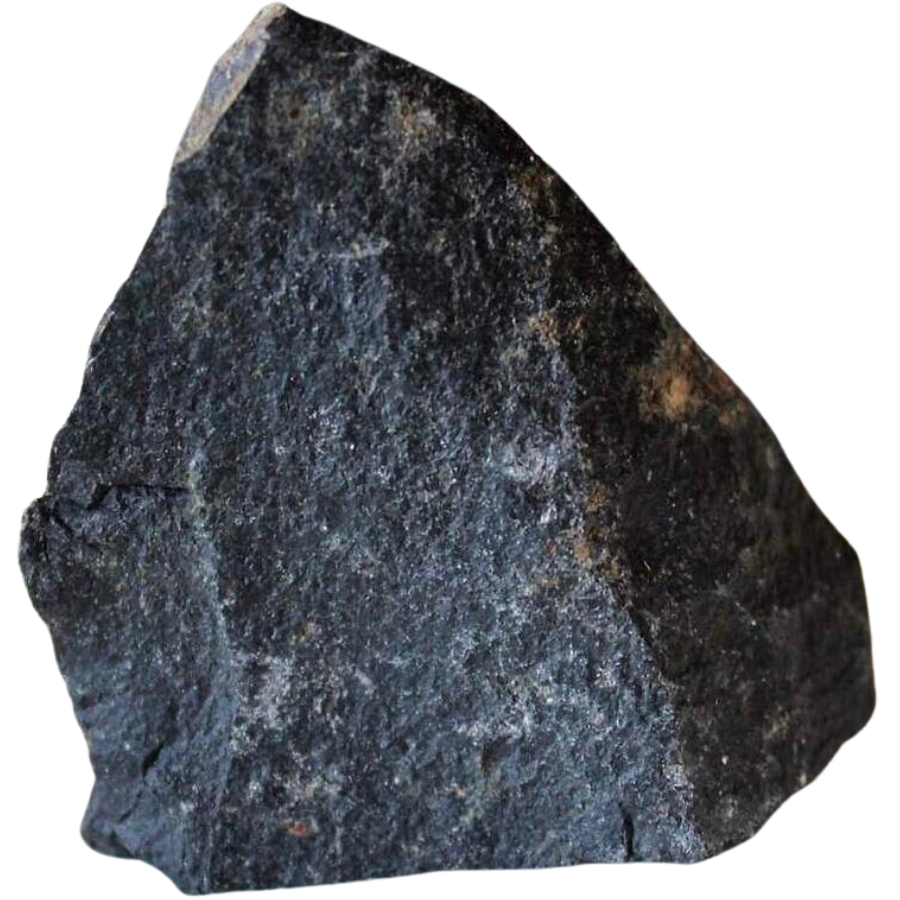
Black jasper, also called basanite, is like the night sky captured in stone. It’s typically solid black or dark gray, and its smooth, glossy surface makes it look sleek and elegant.
Sometimes, you might find black jasper with small white or lighter-colored patterns. Its black color usually comes from organic matter or iron oxide in the mix.
Most jaspers have a bunch of colors and patterns, but this type stands out with its simplicity and elegance.
When it comes to how much black jasper is worth, it’s usually not super expensive, but its value can go up depending on how it’s used or if it’s a particularly unique piece.
Where you can find black jasper (basanite)
You have a good chance of finding black jasper in Arizona, California, and Oregon. These areas have the right mix of volcanic activity and sedimentary processes that help form them. Brazil, Egypt, and Russia also have black jasper.
If you’re interested in other equally stunning black rocks, minerals, and gems, know more about them in our article.
Bloodstone (Heliotrope)
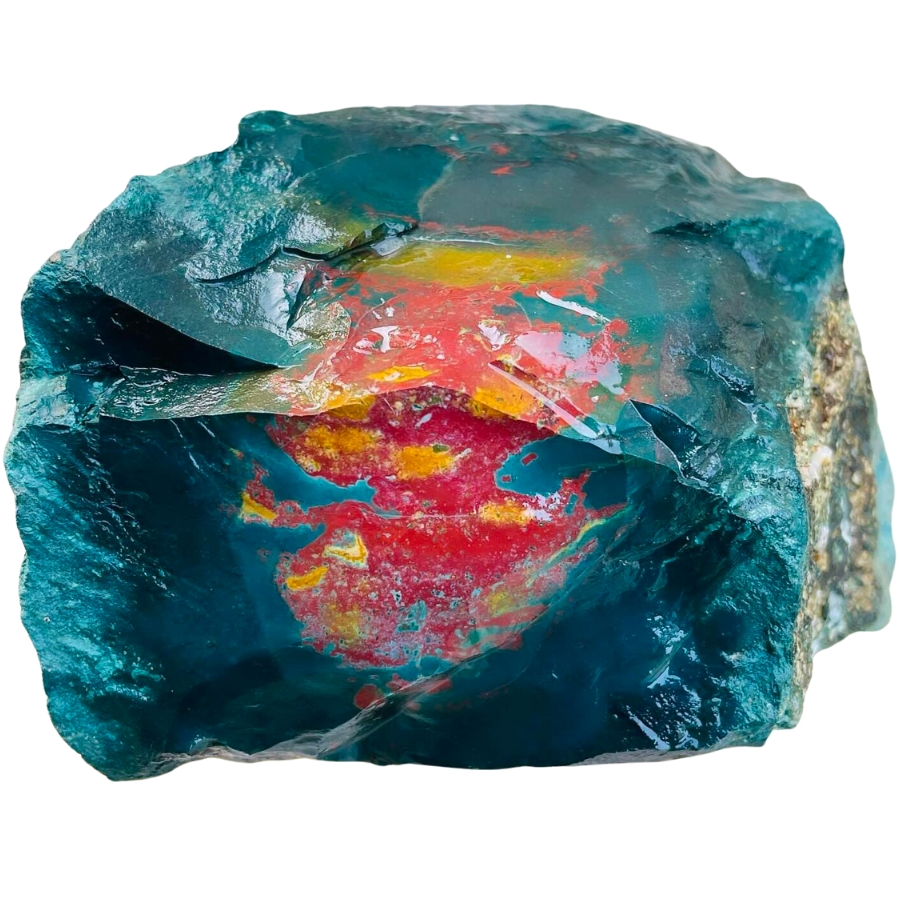
Bloodstone, also known as heliotrope, is mostly dark green with spots of red that often look like drops of blood. These red spots are caused by iron oxide, while the green color comes from chlorite or hornblende.
It forms when minerals in liquid, like volcanic lava, start to harden. The iron oxide gets mixed in during this process, creating those distinctive red spots.
In ancient times, people thought that the red spots on bloodstone were actually drops of blood from Jesus Christ, which is how it got its name.
This distinct appearance is also why it’s so valued in jewelry and as a collector’s item.
Where you can find bloodstone (heliotrope)
Bloodstone grows in regions with volcanic activity. India is one of its most well-known sources. You can also find bloodstone in Brazil, Australia, China, and the USA, specifically in Wyoming and California.
Mookaite Jasper
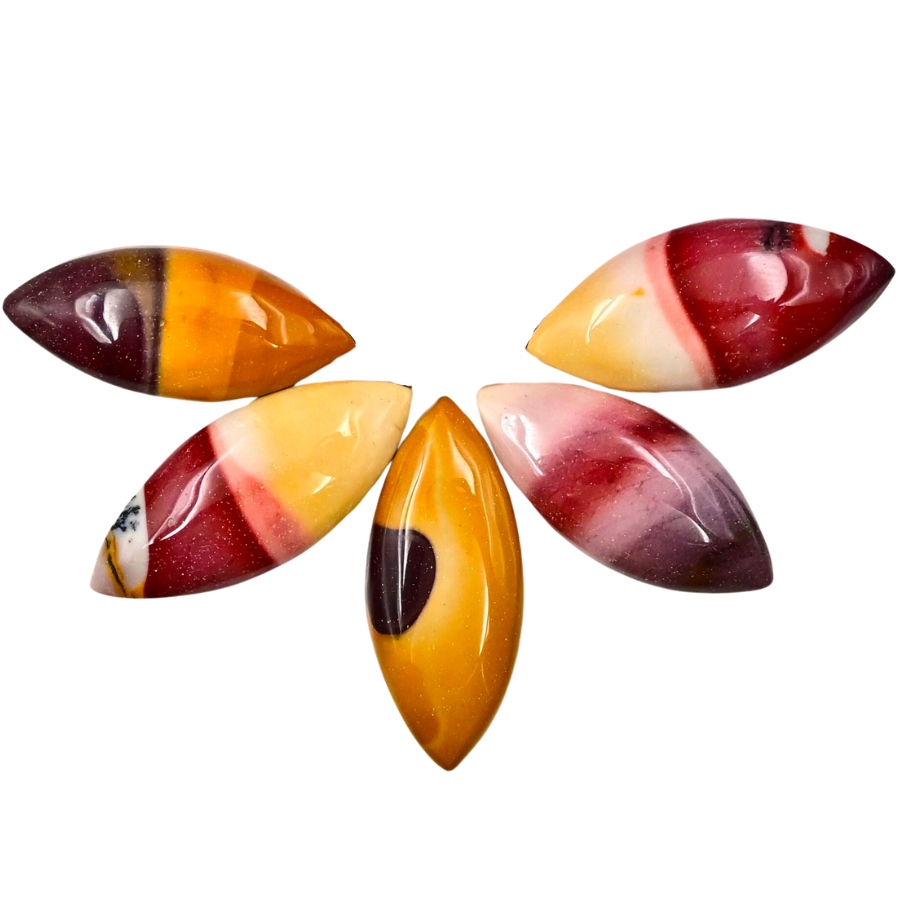
As you can see in the photo above, mookaite jasper is a colorful stone. It comes in a range of colors like red, yellow, purple, and brown, all mixed together in amazing patterns.
It forms in sedimentary rocks, where the remains of tiny creatures and plants get mixed with minerals over millions of years. The different minerals in the area give mookaite jasper its variety of colors.
The name “Mookaite” comes from the Mooka Creek in Australia, where it was first found.
The value of mookaite jasper is in its beauty, its uniqueness, and the stories it carries.
Where you can find mookaite jasper
Mookaite jasper is mostly found in one main place: Western Australia, near Mooka Creek. This area is unique because it has just the right conditions for this rock to form.
Flower Jasper (Poppy Jasper)
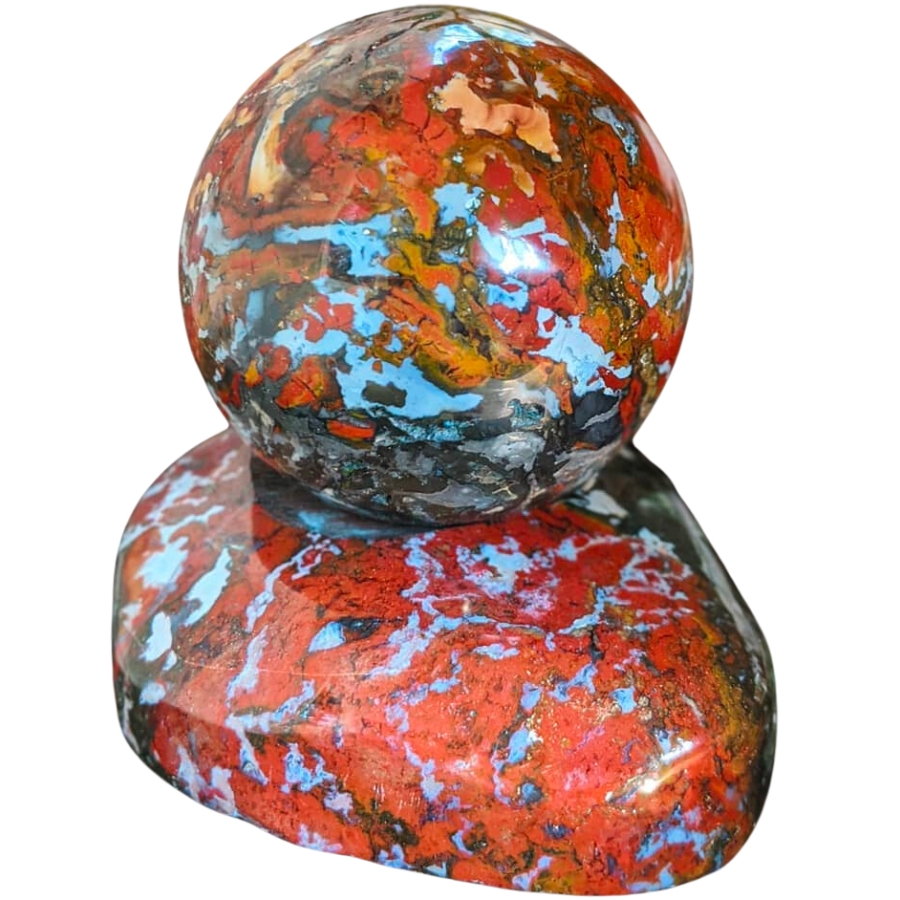
Flower jasper, also known as poppy jasper, usually has a reddish-brown color with circular patterns that look like flowers or poppies. These patterns are often in contrasting colors like white, yellow, or black, which makes them pop.
The “flowers” in flower jasper are actually spherical formations of other minerals that got trapped as the jasper was forming.
When it comes to what poppy jasper is worth, it can vary. It’s not the most expensive stone, but its unique look makes it popular for jewelry and decorations.
Some also believe that it can bring joy and happiness, like a bouquet of flowers in stone form.
Where you can find flower jasper (poppy jasper)
One well-known spot for finding flower jasper is in Morgan Hill, California. Its volcanic environment is key, as the heat and pressure help create the stone’s unique patterns.
Other countries like Mexico, India, and Russia also have flower jasper. These places have similar volcanic backgrounds.
Rainforest Jasper (Rhyolite Jasper)
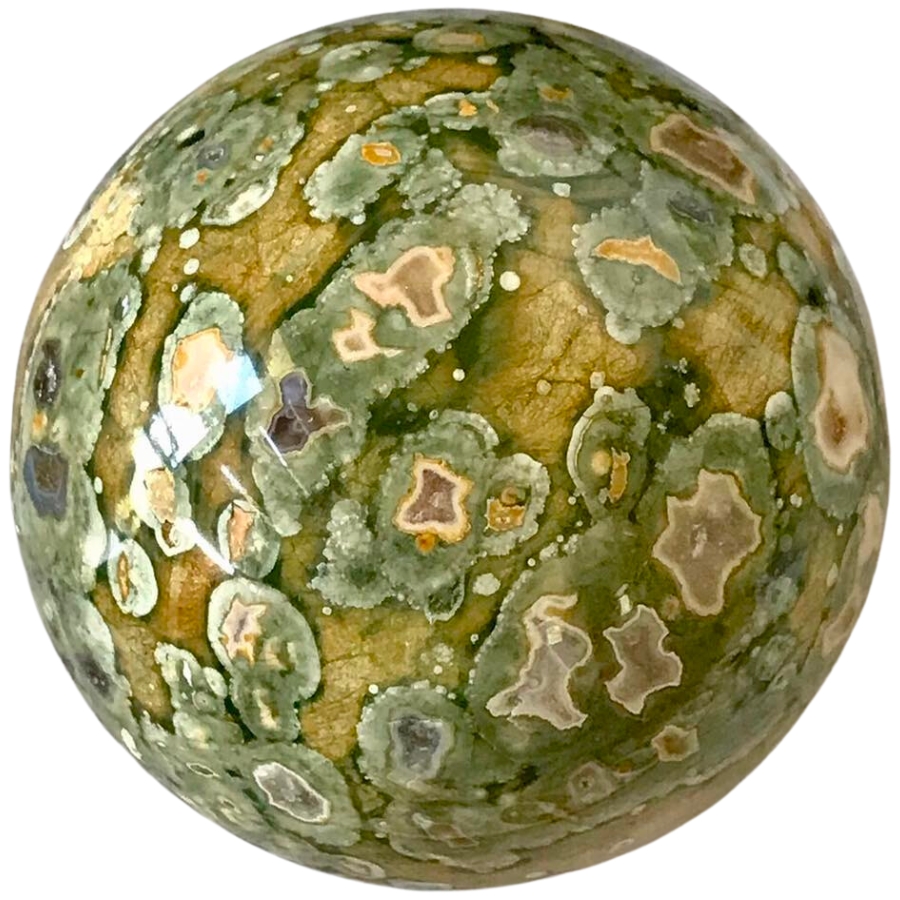
Rainforest jasper, also known as rhyolite jasper, is known for its greenish background. It has patterns that look like leaves, trees, or even whole landscapes that come in various colors, including yellow, brown, and red.
When a volcano erupts, the ash and sediment flow out and mix with silica. Over time, this mix hardens into the stone. The patterns in rainforest jasper are made by the different minerals in the volcanic ash.
It’s not just beautiful, but also rare, which is why it’s so valued.
For some, it can help connect with nature and bring a sense of calmness and balance. This belief adds to the stone’s value.
Where you can find rainforest jasper
A well-known location where you can find rainforest jasper is in Australia. In fact, it’s where some of the most beautiful rainforest jasper comes from. This region has the right kind of volcanic history that’s conducive to forming this stone.
Leopard Skin Jasper
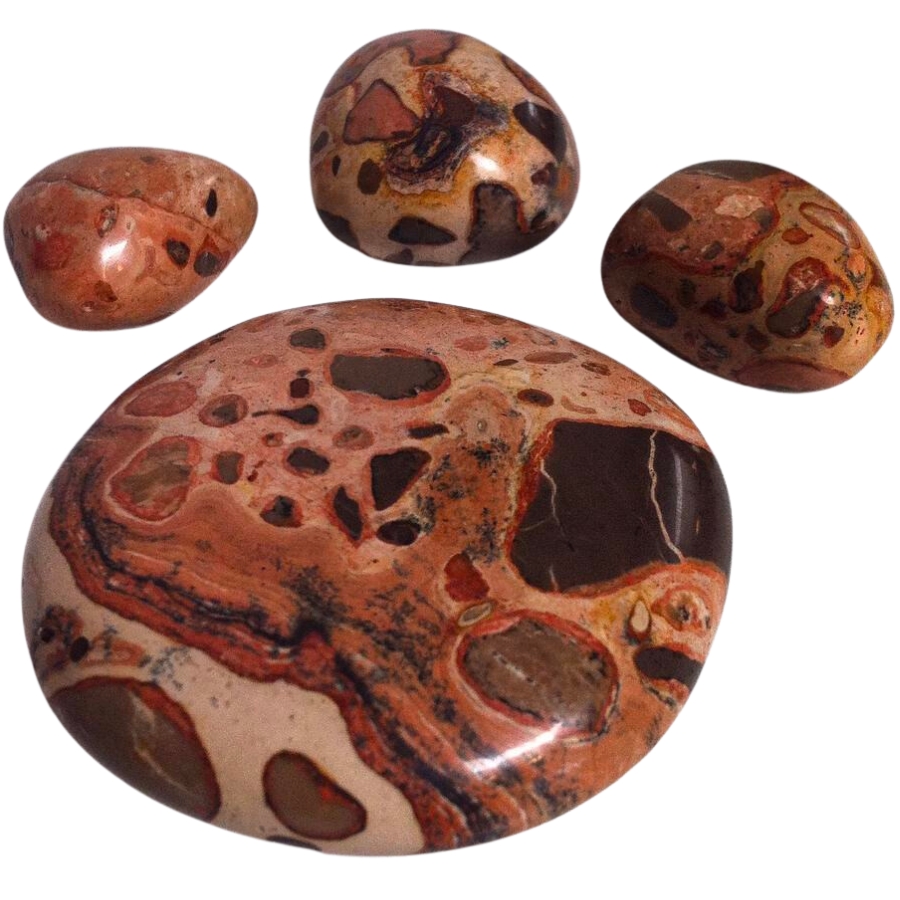
Leopard skin jasper gets its name from its pattern that looks a lot like a leopard’s skin.
It has a base color of tan, brown, or pink, and it’s covered with black, brown, or red spots and rosettes. It’s easy to see why people think it looks like a big cat’s fur!
People love using leopard skin jasper in jewelry and decorations because it’s so eye-catching.
Some people also believe it can help with self-healing and bring a sense of harmony. They think it’s not just a pretty stone but also one that can make you feel good.
Where you can find leopard skin jasper
Oregon and Idaho are both known for their leopard skin jasper deposits, so you may explore these states to uncover this stone. But it’s not exclusive to the USA. You can also find it in Mexico and Brazil.
Brecciated Jasper
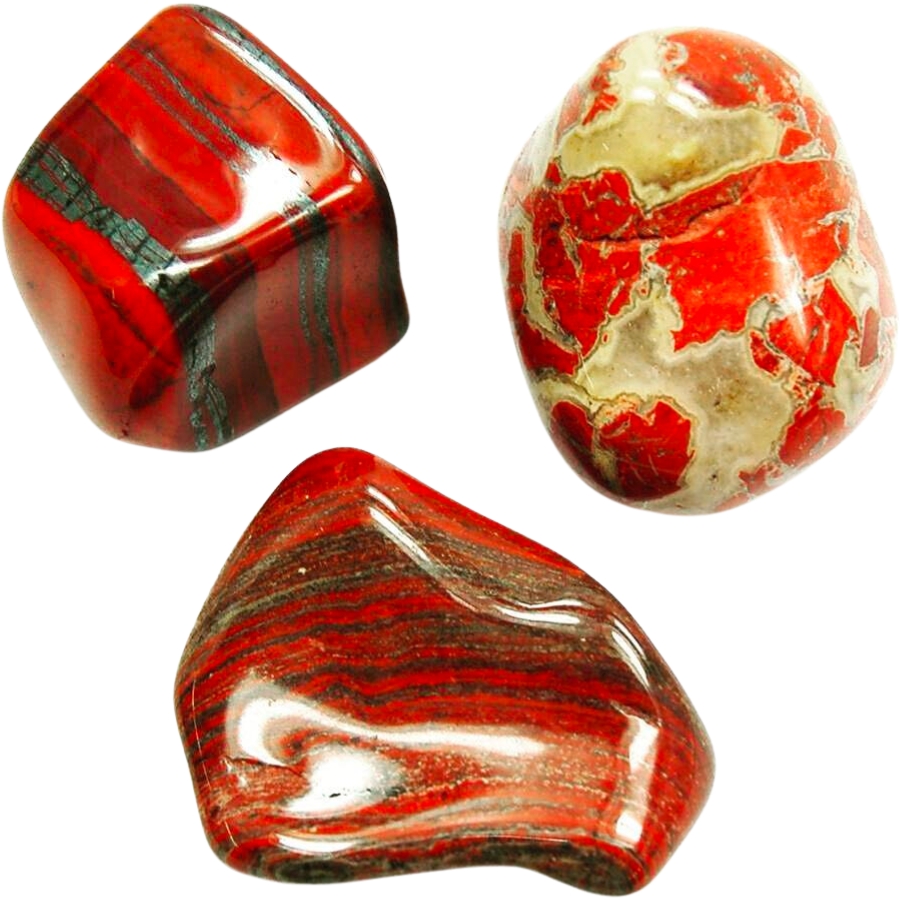
The word “brecciated” comes from “breccia,” which means a rock made of broken fragments.
Brecciated jasper is usually red, but it can have streaks of gray, black, or tan. The fragments are all jumbled up and then naturally cemented together, creating a cool, patchy look.
This stone forms when jasper breaks into pieces, often due to things like earthquakes or other natural movements. Then, these pieces get mixed with other materials that act like glue and stick everything back together.
Brecciated jasper is distinct because of its broken and reformed look. Some believe that it can bring energy and focus.
In ancient times, people even thought it had protective powers. They carried them as amulets to keep themselves safe.
Where you can find brecciated jasper
You have a great chance of finding brecciated jasper in Arizona, California, and Utah. These areas often have a history of volcanic activity and geological movements, which are important for creating this stone.
Brazil, Egypt, and India also have deposits of brecciated jasper. In these locations, natural events like earthquakes or volcanic eruptions have led to this rock’s formation.
Porcelain Jasper (Exotica Jasper or Sci-Fi Jasper)
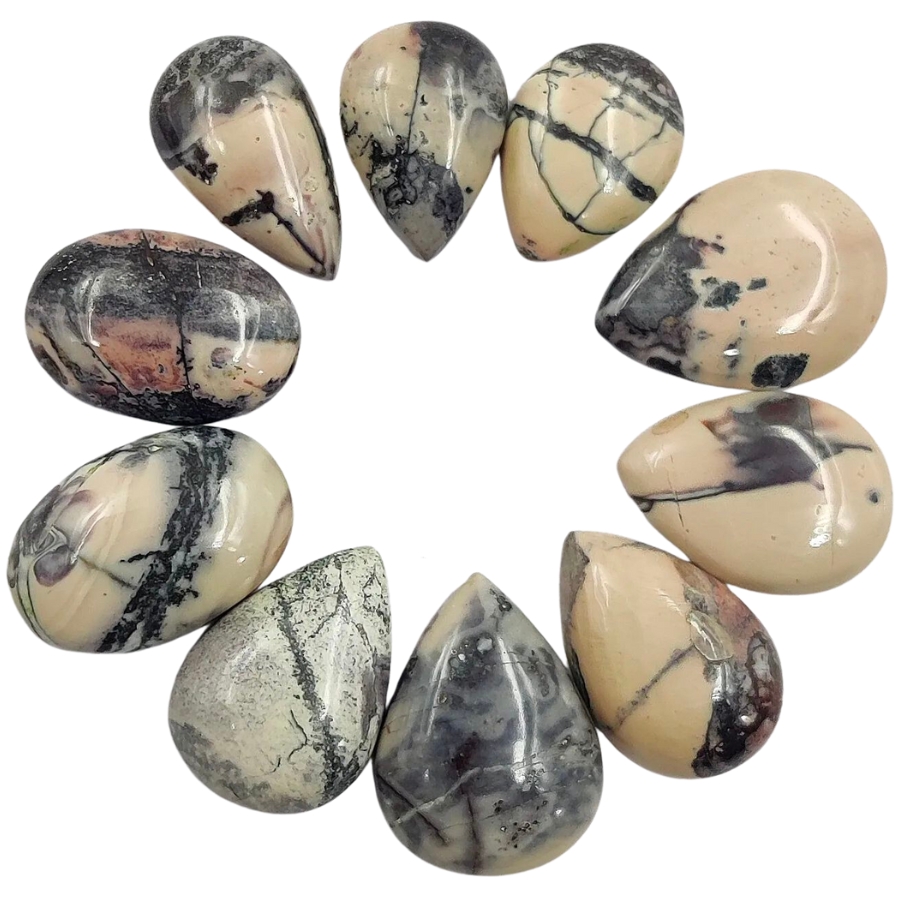
Also known as exotica jasper or sci-fi jasper, porcelain jasper has a smooth, porcelain-like finish.
Its colors are often a mix of cream, tan, black, and sometimes pink or red. These colors swirl together in intricate patterns that look almost artistic, like an abstract painting.
It’s sometimes called “sci-fi jasper” because its patterns can look otherworldly, like something from a science fiction movie. This certainly adds to the stone’s appeal.
Its smooth texture and the way its colors blend together make porcelain jasper highly valued. Jewelry makers and collectors love it for its stunning patterns.
Where you can find porcelain jasper (exotica jasper or sci-fi jasper)
If you want to find porcelain jasper, you can search through the landscapes of Nevada. It’s also reportedly found in Mexico, which is known for having a history of volcanic activity.
Zebra Jasper
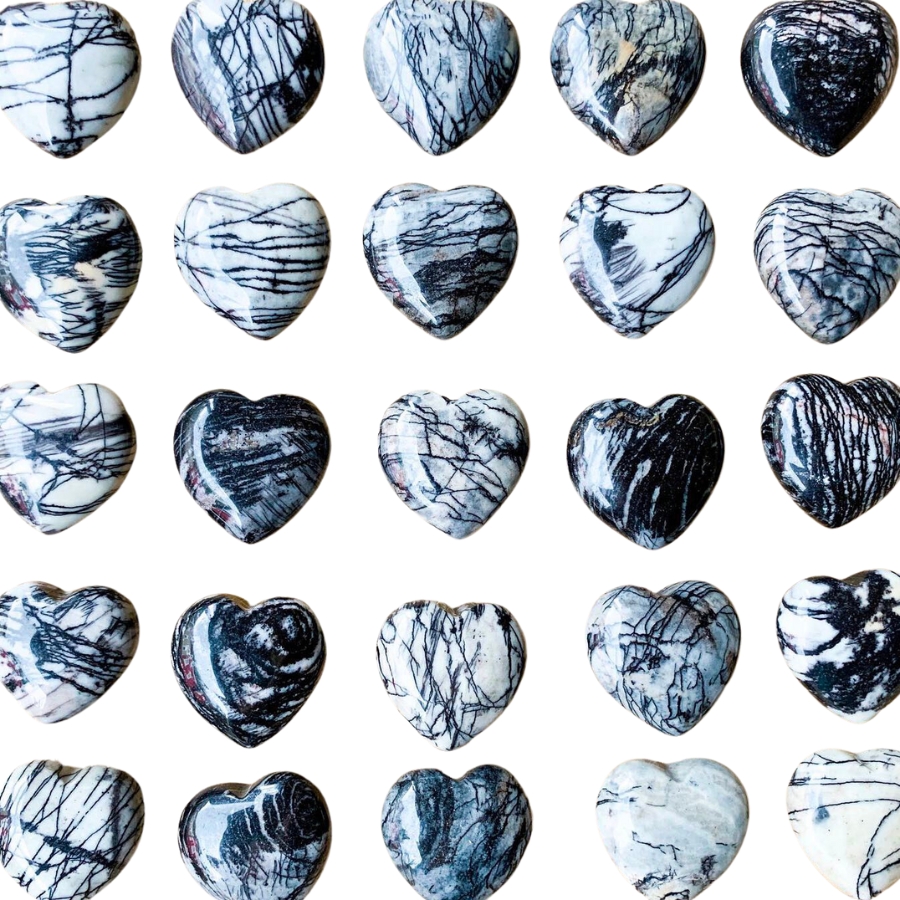
As you can guess, zebra jasper got its name from its striped pattern, just like a zebra’s stripes. It has alternating bands of black and white or dark brown and cream.
The stripes in zebra jasper happen because of the way the materials get layered and then squished together during its formation.
Sometimes, it’s also called “zebra stone” because of its pattern. Its striking look makes it popular for jewelry and decorations.
But it’s not just its look that people value. Some folks think that it can help with balance and energy.
Where you can find zebra jasper
You can explore several locations if you want to uncover zebra jasper, such as Arizona and California in USA. It can also be found in India, Russia, and Brazil.
Imperial Jasper
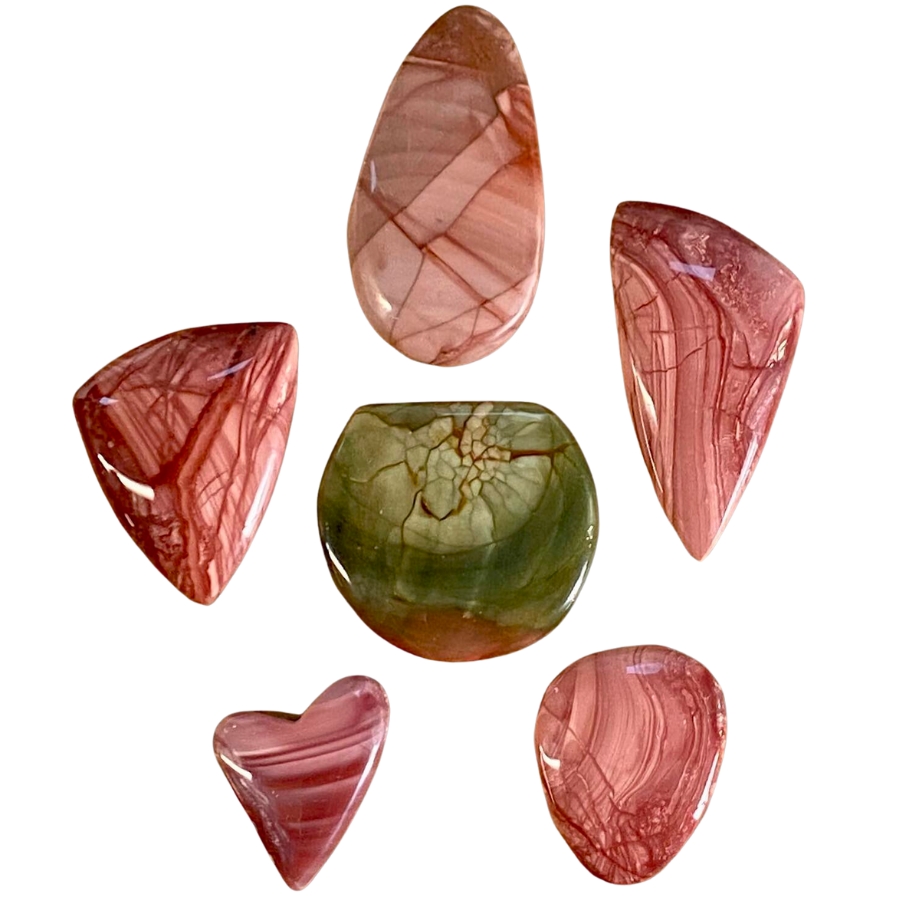
Known for its unique patterns and beautiful colors, imperial jasper is usually found in shades of green, pink, red, brown, and sometimes even blue.
Each piece has its own set of patterns, like stripes, spots, or swirls.
Imperial jasper is sometimes called “royal jasper” because of its elegant and refined appearance. This name makes it sound even more special and valuable.
Speaking of which, if imperial jasper is valuable, it’s not just because it’s pretty. Some people also think it has special properties, like helping with relaxation and peace. These beliefs add to its overall appeal.
Where you can find imperial jasper
Aiming to find imperial jasper? Not to burst your bubble, but this jasper type is not found just anywhere. One of the most well-known places for imperial jasper is in Mexico.
Picasso Jasper (Red Creek Jasper or Cherry Creek Jasper)
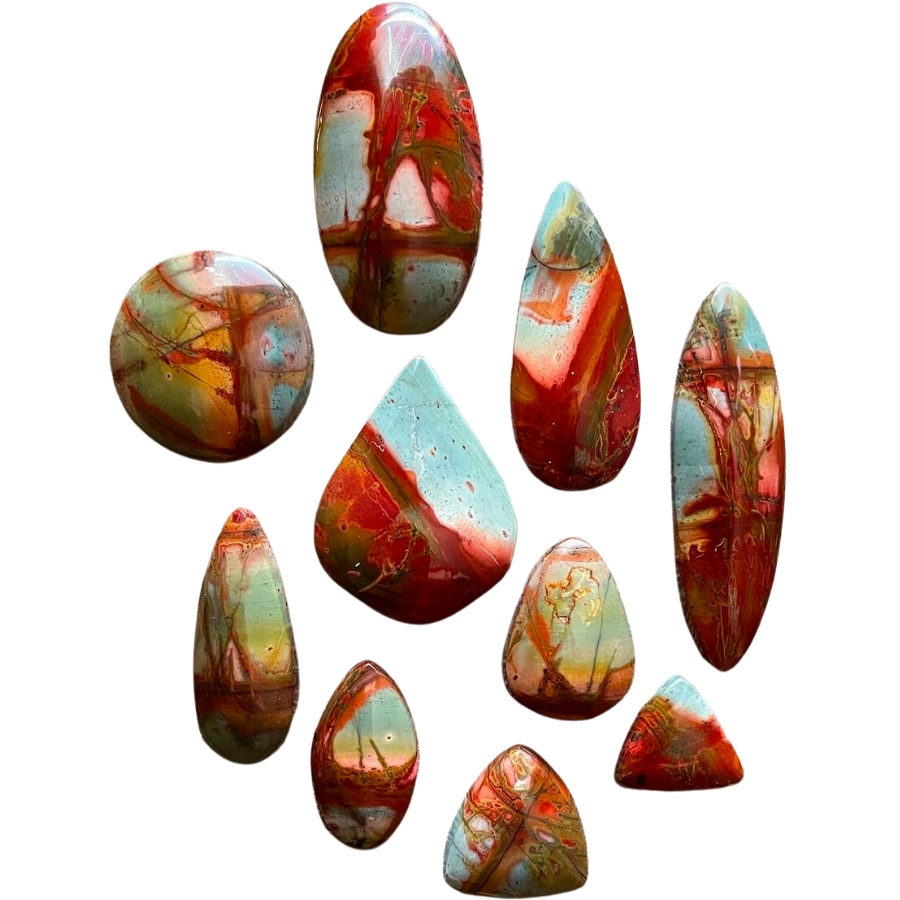
Just look at the photos above and you’ll see right away why Picasso jasper is named as such. It looks like a piece of abstract art! It’s named after the famous artist Pablo Picasso because of its wild patterns.
This stone usually has a mix of gray, black, tan, and sometimes red or brown colors. Its patterns are often streaky and wavy, like brush strokes on a canvas.
Its artsy, unique patterns set Picasso jasper apart from other types. It’s popular in jewelry making and among collectors for its one-of-a-kind look.
Because of its looks, Picasso jasper is also believed by many to inspire creativity and help with inner clarity. They think it can bring out their artistic side and clear their minds.
Where you can find Picasso jasper (red creek jasper or cherry creek jasper)
One of the known locations for Picasso jasper is in the state of Utah. This area has the right kind of geological conditions for the formation of this type of jasper.
Mexico is another country where Picasso jasper can be found.
Spiderweb Jasper
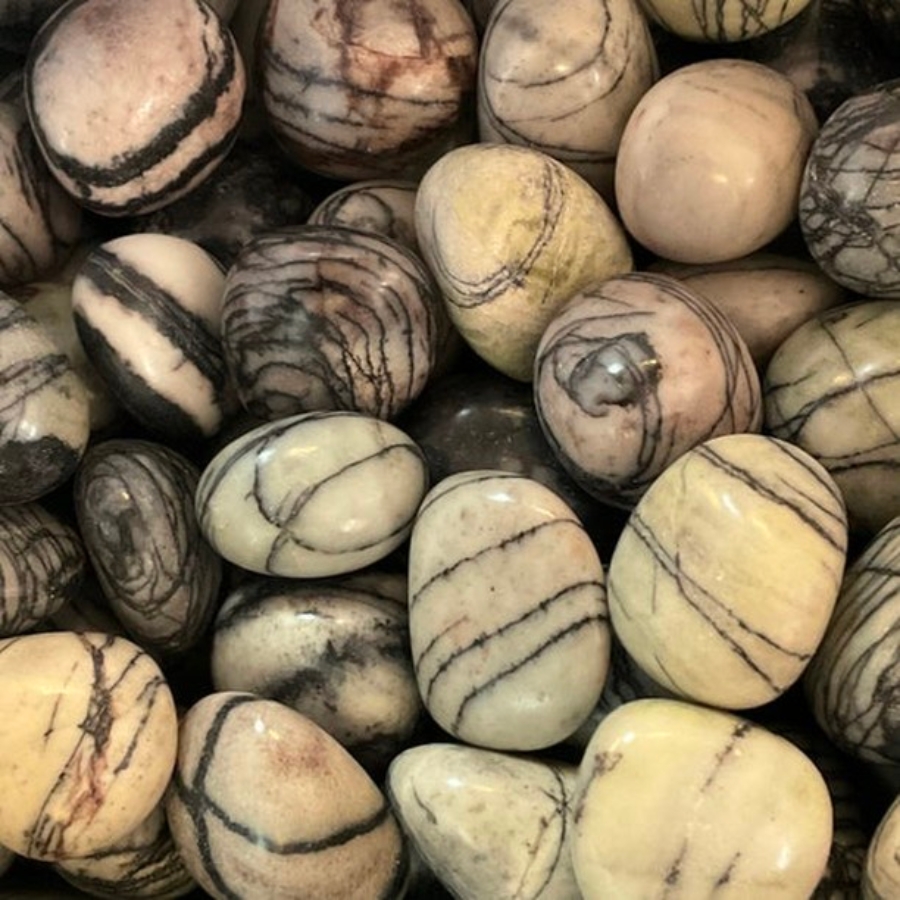
Spiderweb jasper usually comes in a dark color, like black or deep green, and it has these thin, web-like patterns all over it.
Its patterns are usually white or lighter in color, and they crisscross the stone, making it look like a spider’s web.
This unique look is why it’s valued, especially among collectors and artists. People use it in jewelry and other crafts because it’s so eye-catching and different.
Spiderweb jasper is also sometimes used in home decor, like in tiles or as accents in furniture. Its striking pattern can add a cool, natural touch to any room.
Where you can find spiderweb jasper
You can find spiderweb jasper in areas like Oregon and California in the USA. Countries like Mexico and Australia also have deposits of this type of jasper. These places share similar volcanic backgrounds, crucial for the stone’s formation.
Confetti Jasper
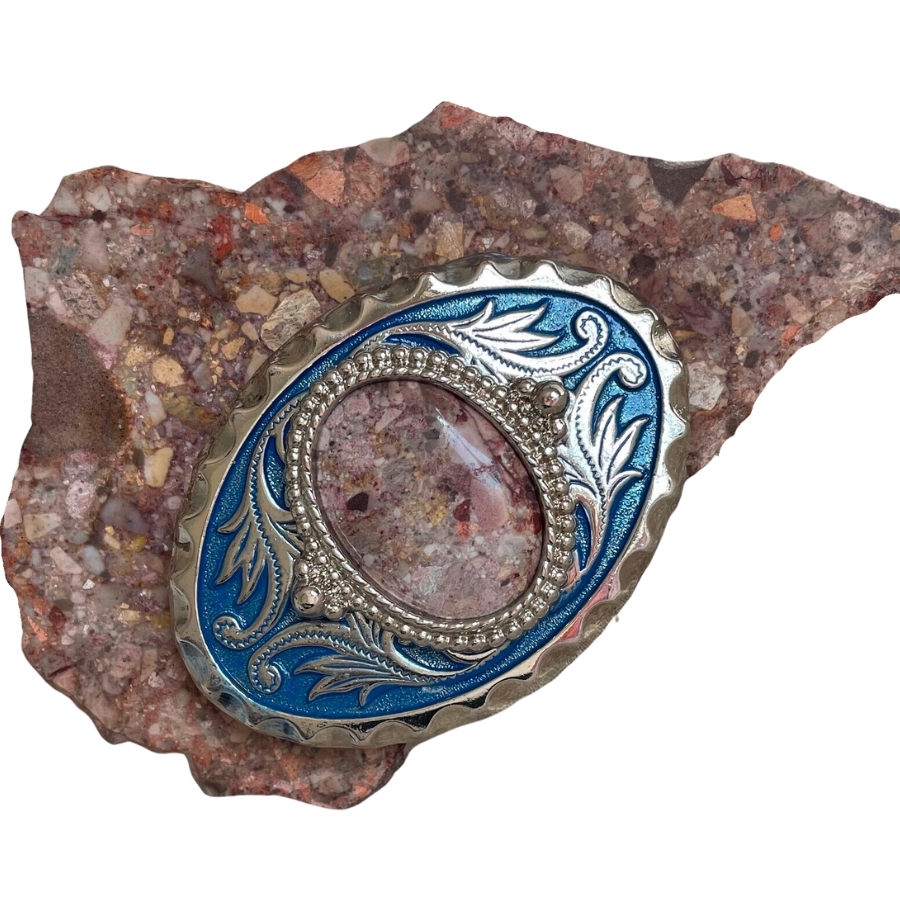
Close your eyes and imagine a party in a rock— that’s confetti jasper for you! It’s filled with speckled, multi-colored patterns that remind you of confetti.
It’s distinct because of its cheerful, multi-colored appearance. It’s valued for its beauty and uniqueness.
It’s also sometimes used in decorative items, like inlay work for furniture or as accent pieces in various crafts. Its bright and varied colors can liven up any object.
This use in crafts and decor adds to confetti jasper’s value, making it a sought-after material not just for its beauty, but also for its versatility in design and art.
Where you can find confetti jasper
In the USA, areas like Arizona and Oregon are known for having confetti jasper. These regions have sedimentary environments, which are perfect for forming this colorful stone.
Other countries like Mexico and Madagascar also have deposits of confetti jasper. Each location contributes its special mix of colors and patterns to confetti jasper.
Noreena Jasper
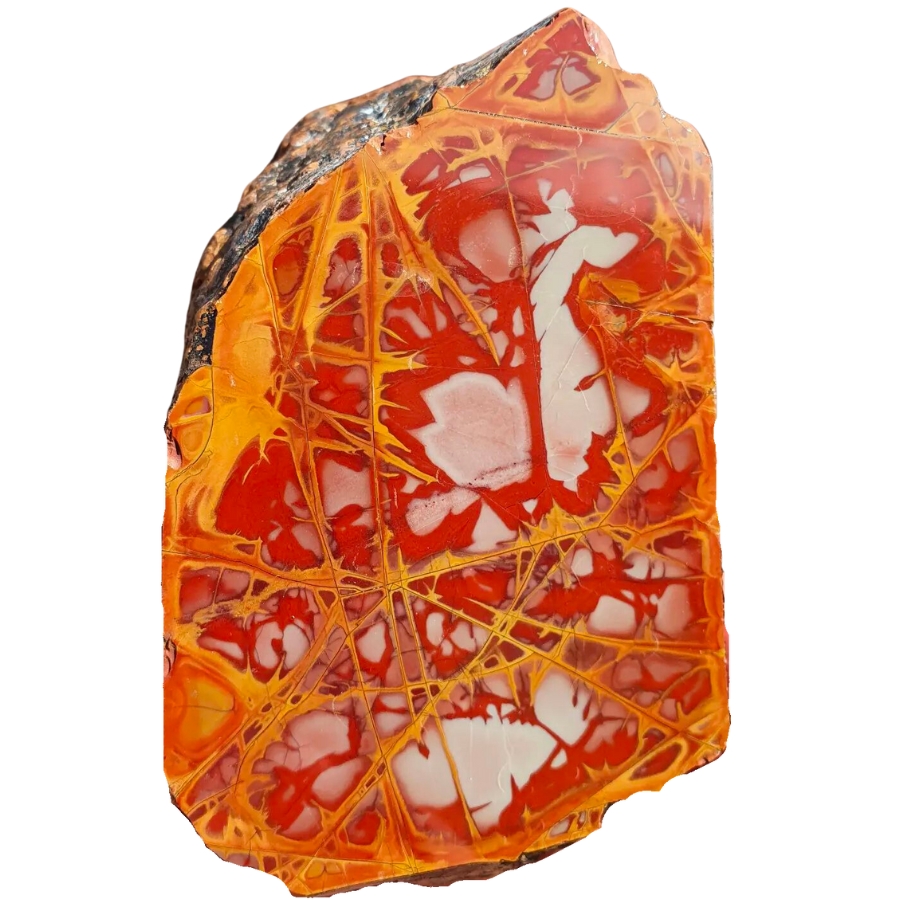
Noreena jasper stands out because of its amazing patterns. It’s usually red or yellow, and it has these intricate, web-like patterns all over it.
Its patterns are usually darker, like black or brown, and they create stunning designs that look almost like landscapes or abstract art.
As you can see in the picture above, the vibrant colors and detailed patterns of noreena jasper are simply breathtaking.
It’s sometimes used in making decorative items, like bowls or coasters because of its bold patterns. It’s also valued for its use in jewelry and crafts.
Where you can find noreena jasper
Noreena jasper is pretty unique because it’s mostly found in one specific place: the Pilbara region of Western Australia. This area is known for its rich mineral deposits and geological history.
Polychrome Jasper (Desert Jasper)
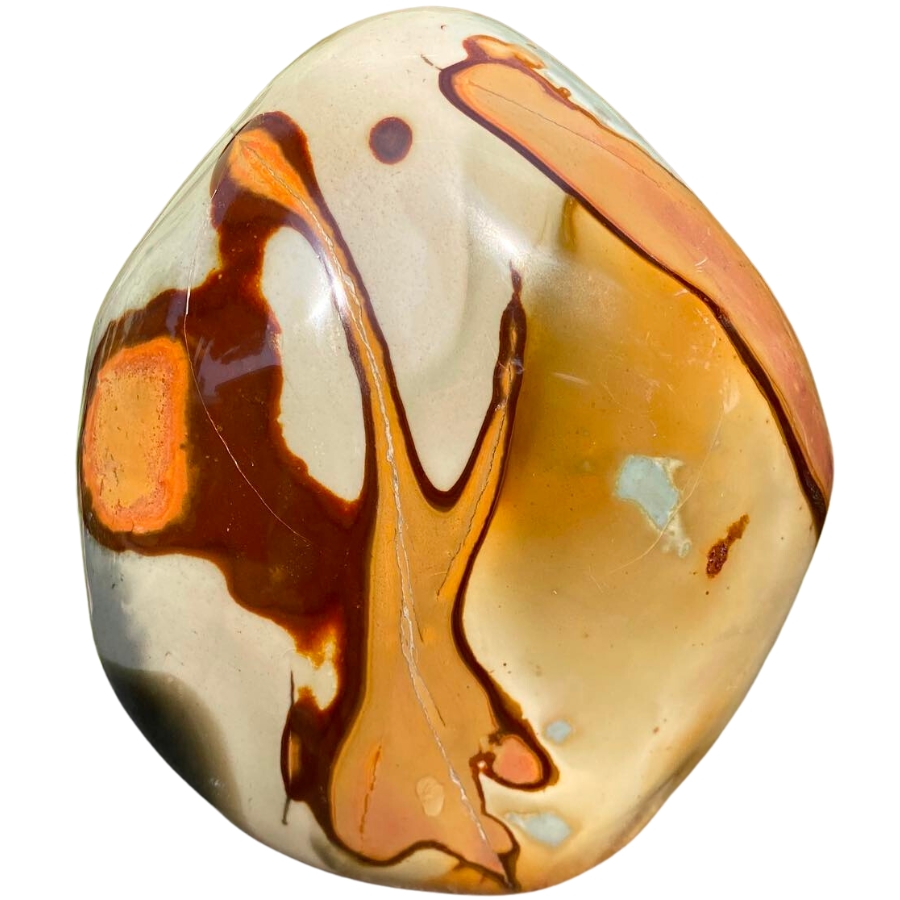
Polychrome jasper is like a burst of colors in rock form. Its name, “polychrome,” means “many-colored,” and that’s exactly what it is. This jasper has swirling patterns of red, yellow, brown, and sometimes even blue or green.
What makes polychrome jasper distinct is its vibrant, earthy colors and the way they blend together in unique patterns.
This is why it’s valued, especially among artists and collectors. They love it for its natural beauty and the way each piece stands out.
Polychrome jasper was discovered relatively recently, in 2006, while miners were looking for ocean jasper in Madagascar. This recent discovery adds to the stone’s appeal.
Where you can find polychrome jasper (desert jasper)
Polychrome jasper is mostly found in Madagascar, a place known for its unique and colorful gemstones. The mix of lava, ash, and minerals in Madagascar is just right for creating the stone’s vibrant colors and patterns.
Fancy Jasper
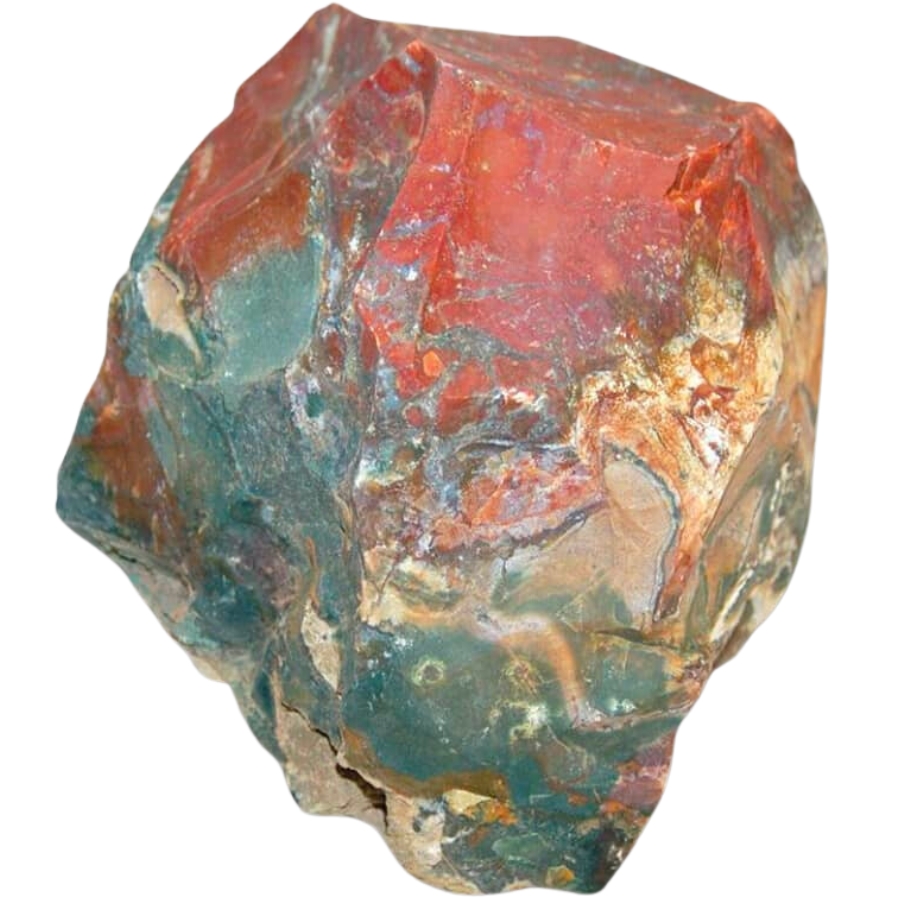
Fancy jasper is as interesting as it sounds. It has all sorts of different colors mixed together— you’ll see reds, greens, yellows, and sometimes even blues or browns.
Its patterns are random, which means every piece of fancy jasper is unique.
The different colors in fancy jasper come from the various minerals in the area where it forms.
Its mix of colors and the way no two pieces are exactly alike are what make fancy jasper pretty interesting. People use it in jewelry and crafts because it adds a pop of color and interest.
It’s also sometimes used in home decor, like in making decorative tiles or accent pieces. Its bright colors and patterns can liven up any space.
Where you can find fancy jasper
You can find fancy jasper in areas like Oregon and Idaho, which have sedimentary environments that are perfect for forming this colorful stone. Other countries, such as India and Brazil, also have rich deposits of fancy jasper.
Chrysanthemum Jasper
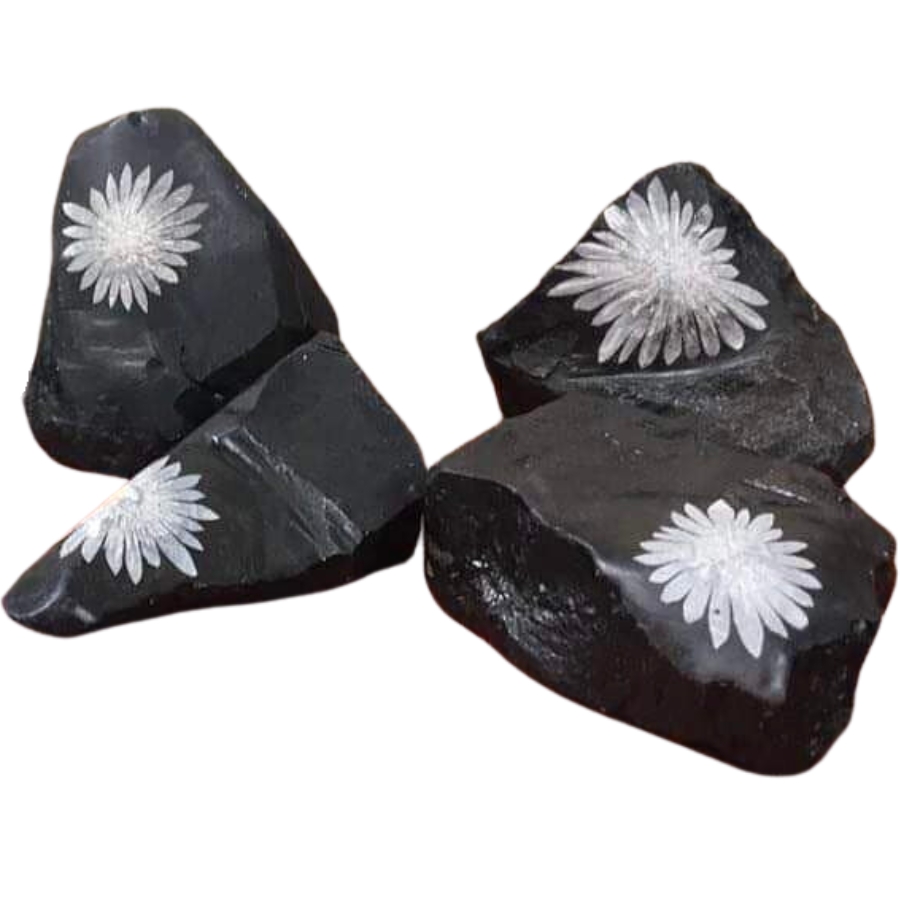
Chrysanthemum jasper is a super unique and pretty stone. It’s famous for its patterns that look like chrysanthemum flowers.
These patterns are usually circular or spherical, and they stand out against the darker background of the stone. Its colors can range from white to yellow or brown, and the background is often dark greenish-gray or black.
Chrysanthemum jasper is valued for its floral patterns and the way each piece is different.
It’s used in making decorative items, like coasters or paperweights. Its striking floral patterns can make even the simplest object look special and artistic. It’s also used in jewelry and other crafts.
Where you can find chrysanthemum jasper
Chrysanthemum jasper is mostly found in China, where some of the most beautiful specimens come from.
Unfortunately, while you might find jaspers with floral-like patterns in the US, they’re not exactly the same as chrysanthemum jasper.
Biggs Jasper
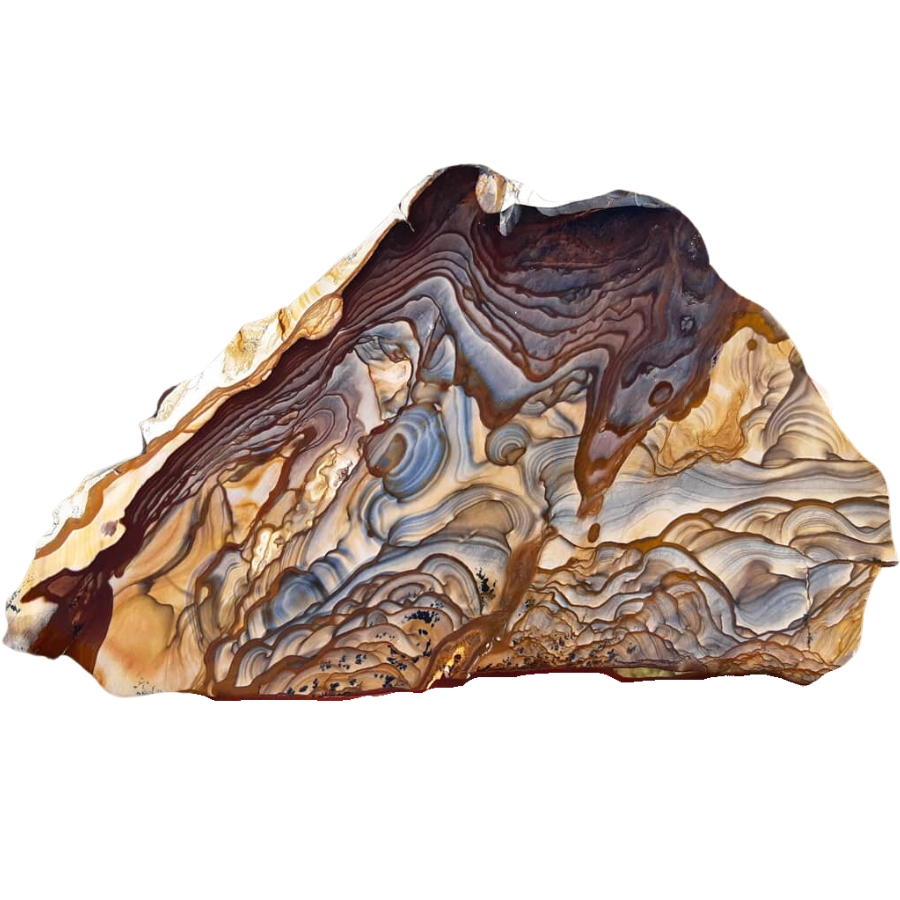
Biggs jasper is usually a mix of brown, tan, and cream colors, with patterns that often look like landscapes. You might see what looks like mountains, valleys, or even desert scenes in it.
These patterns come from the way the minerals in the stone are arranged, and it’s like looking at a picture painted by nature!
This jasper type was discovered in the 1960s near Biggs Junction in Oregon. The area where it was found was later covered by a highway, making the original biggs jasper even more rare and valuable.
Today, it’s valued for its artistic appearance and the way each piece tells a story with its unique designs.
Where you can find biggs jasper
Interestingly, biggs jasper is mainly found in one specific place: near Biggs Junction in Oregon, USA. This area is known for its unique and high-quality specimens of this jasper.
Leaf Jasper
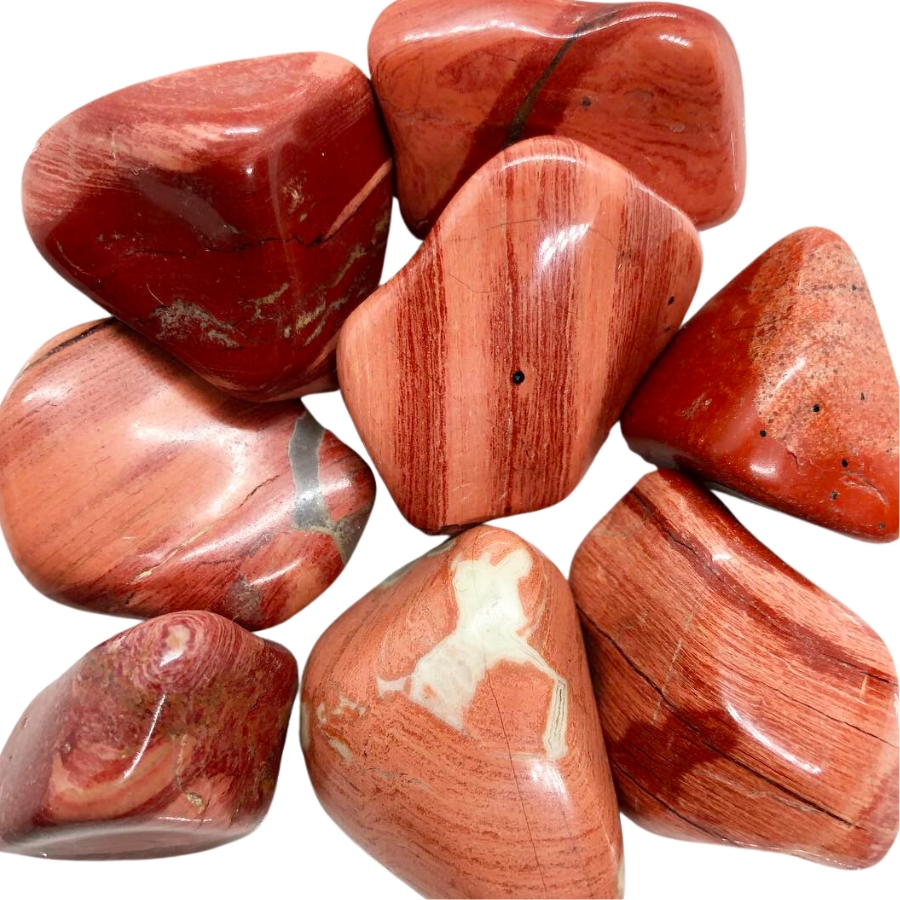
Leaf jasper, as its name suggests, looks like it has tiny leaves or branches trapped inside.
It’s usually green and brown, but sometimes you’ll see other earthy colors like yellow or red in there, too.
This stone starts as mud or ash that gets mixed with silica. Over thousands of years, this mix turns hard and becomes jasper. The leaf-like patterns are made by minerals and organic matter that get mixed in with the jasper as it forms.
Leaf jasper is often used in landscape design and garden decorations. Its natural, earthy look makes it perfect for adding a little bit of the outdoors to any space.
Gardeners and landscapers use it to create beautiful, natural-looking accents in gardens and yards. This use in outdoor design adds to why leaf jasper is valued.
Where you can find leaf jasper
Leaf jasper is commonly found in various regions worldwide. Oregon’s Biggs Junction area boasts a rich deposit of leaf jasper, showcasing hues of green, red, and brown.
California’s Mojave Desert, particularly near Barstow, yields specimens with bold reds and earthy tones. Idaho’s Bruneau Canyon reveals leaf jasper with captivating patterns.
Bruneau Jasper
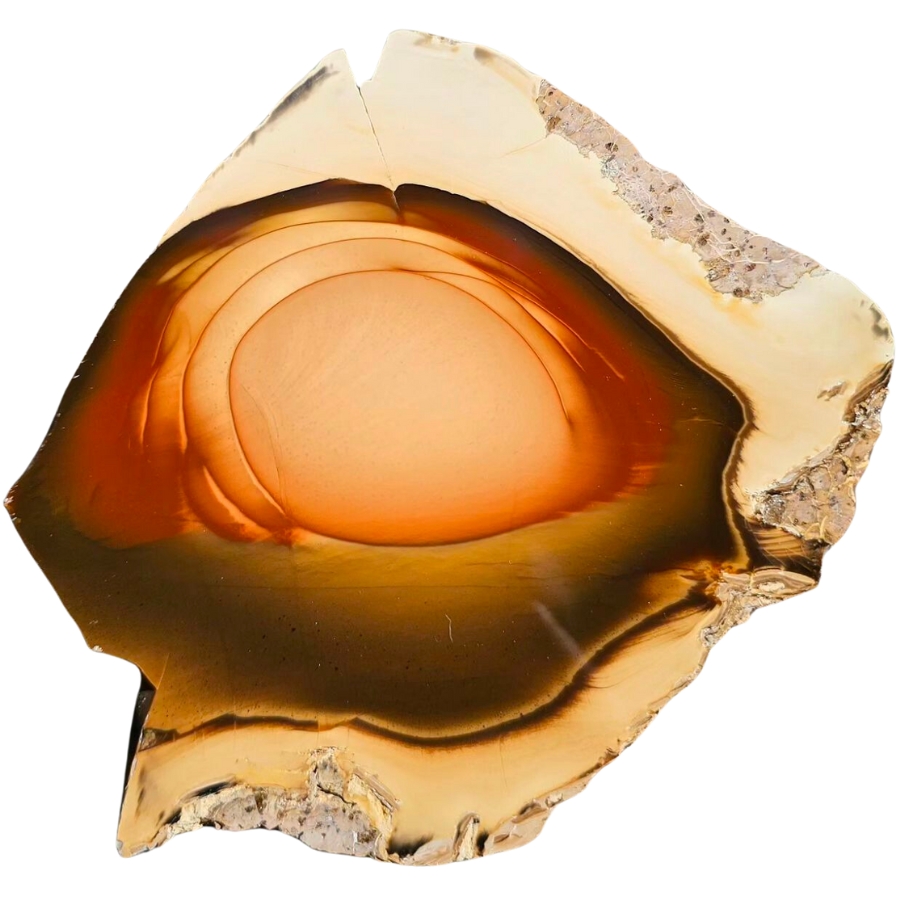
Bruneau jasper captivates with its distinctive appearance. This exquisite stone displays a remarkable blend of vibrant colors, predominantly reds, greens, and browns, arranged in intricate patterns resembling picturesque landscapes.
The swirling, abstract designs create a visual masterpiece within each piece of bruneau jasper, making it instantly recognizable among gem enthusiasts.
Valued for its rarity and aesthetic appeal, bruneau jasper has become a sought-after choice for jewelry and lapidary enthusiasts.
Some enthusiasts of this stone even believe that its unique patterns resemble aerial views of landscapes, sparking the imagination and connecting wearers to the Earth’s ancient geological history.
Where you can find bruneau jasper
Bruneau jasper is predominantly found in the USA. The scenic landscapes of Idaho, particularly near Bruneau Canyon and the Owyhee Dam, host extensive deposits of this captivating gem.
Additionally, the Mojave Desert in California, near Barstow, reveals unique variations of bruneau jasper with rich reds and earthy tones.
Morrisonite
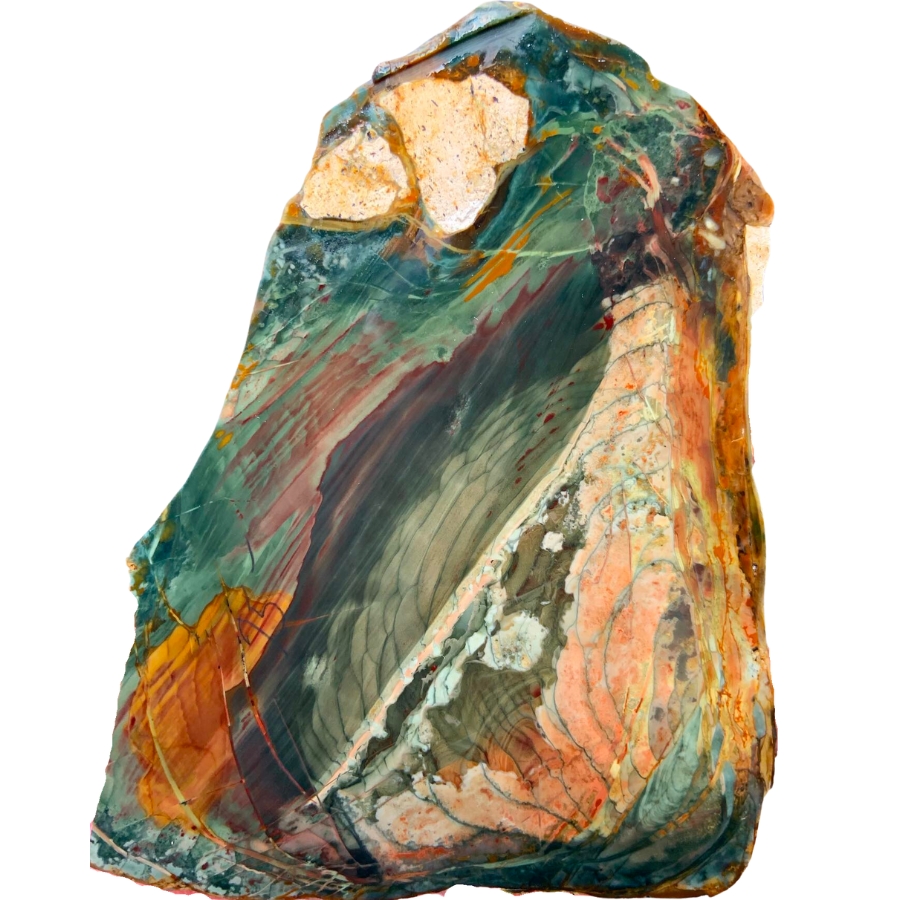
Morrisonite stands out with a tapestry of colors and patterns that make it truly one-of-a-kind. This type of jasper showcases a mesmerizing array of hues, including reds, greens, and blues, arranged in intricate swirls and waves.
The distinct and dynamic patterns within morrisonite are a result of its formation through silicification.
Morrisonite earned its name from the Morrison Ranch in Oregon, where this captivating jasper was first discovered.
What makes it exceptional is its rarity and aesthetic appeal. It has become a sought-after choice for jewelry and lapidary work because of its intricate designs and vibrant colors.
Where you can find morrisonite
Lucky for you, morrisonite is predominantly found in the USA. The Morrison Ranch in Oregon, where it was first discovered, remains a notable source.
Other regions in Oregon, such as the Owyhee Dam area, also host significant deposits of morrisonite. Idaho’s Bruneau Canyon also showcases variations of this stone with stunning colors.
Honey Jasper
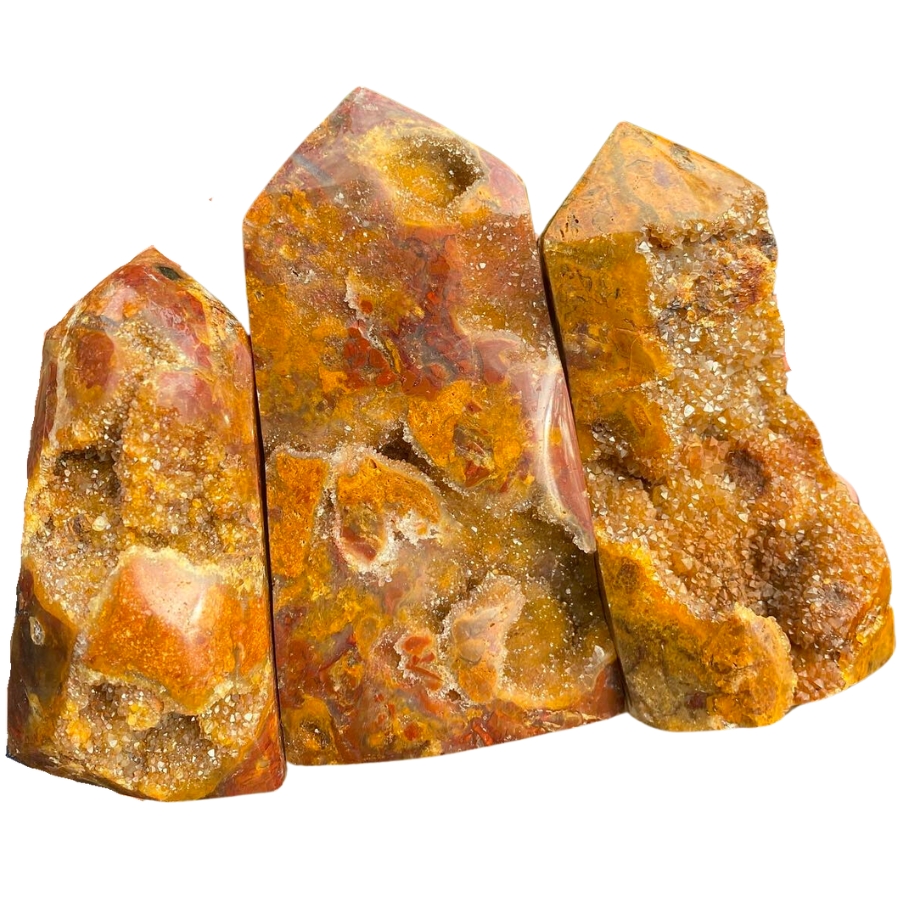
With its inviting warmth, honey jasper enchants with its golden and caramel tones, resembling liquid honey. It’s formed through a combination of volcanic activity and mineral-rich groundwater.
It has a unique blend of earthy tones and gentle swirls. Each piece showcases a mesmerizing interplay of colors, ranging from light yellows to deeper amber shades.
Because of its distinct appearance, it has become a favored choice for jewelry and decorative items.
Some even believe that wearing honey jasper jewelry brings a sense of warmth and positivity, much like the comforting embrace of honey itself.
Where you can find honey jasper
Honey jasper is commonly found in various locations in the USA. Idaho’s Bruneau Canyon and the Owyhee Dam area reveal substantial deposits of this enchanting gem.
Parts of Oregon also contain the warm and soothing tones of honey jasper.
Batik Jasper
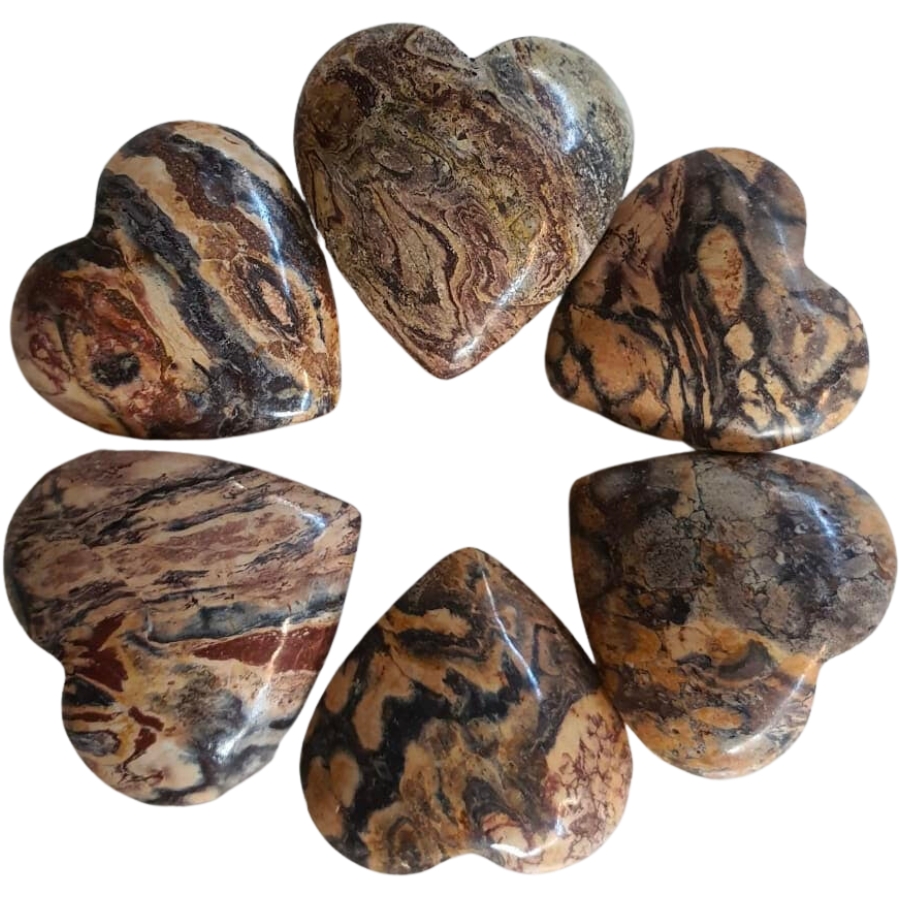
Batik jasper delights with its intricate patterns reminiscent of batik textiles. The name “batik” is inspired by the ancient Indonesian art of wax-resist dyeing, where intricate patterns are created on fabric.
This unique stone showcases a rich palette of earthy hues, ranging from warm browns to deep reds, all arranged in mesmerizing swirls and layers.
This type of jasper stands out due to its vivid and dynamic appearance. Each piece is a natural work of art, displaying the fascinating interplay of colors and patterns.
Because of its unique charm, batik jasper is a popular choice for jewelry and ornamental pieces.
Where you can find batik jasper
Several areas in Idaho area reveal significant deposits of batik jasper. The same is true for the Biggs Junction area in Oregon.
Blue Jasper
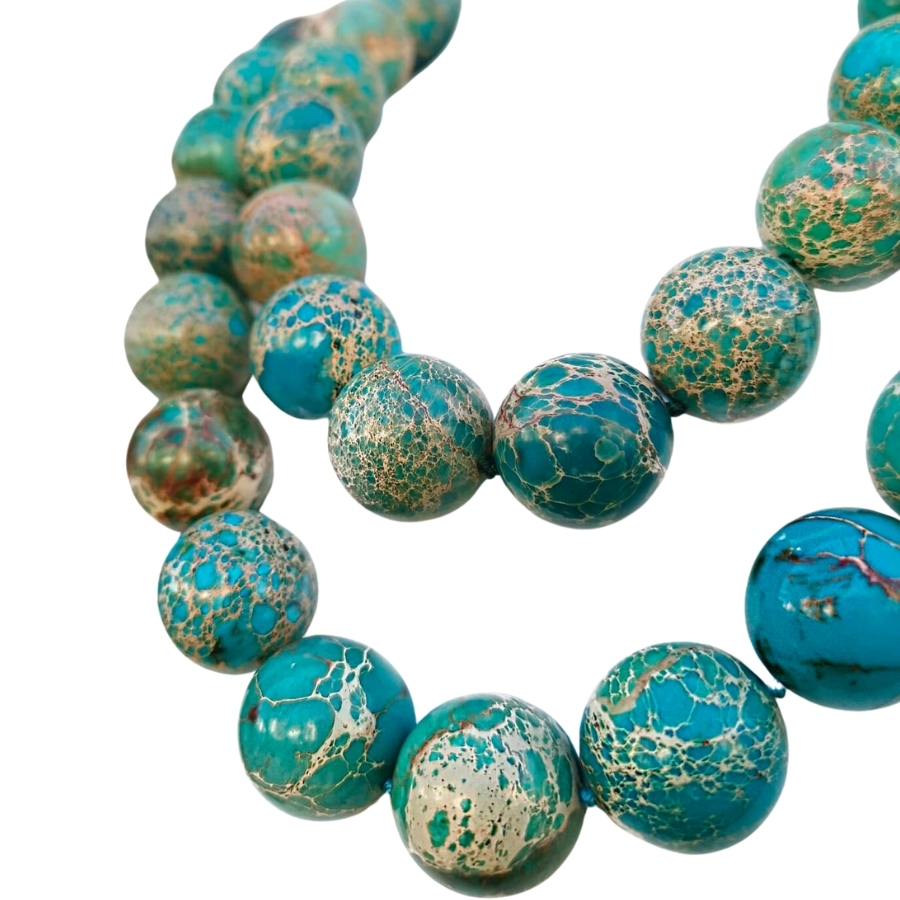
Blue jasper has calming shades ranging from gentle blues to deep indigos.
This striking stone originates from fine-grained sediments. Over time, silica-rich fluids permeate the sediments, creating the distinctive patterns and hues that define this jasper type.
Blue jasper is most well-known for its soothing appearance and versatile patterns. Each piece has a unique combination of swirls and bands, making it a sought-after choice for jewelry and decorative items.
Blue jasper is often associated with tranquility and balance. Some varieties of this type showcase orb-like patterns resembling distant planets. This celestial resemblance adds an intriguing dimension to the stone.
Where you can find blue jasper
Blue Jasper, with its tranquil allure, is commonly found in various locations, including parts of the USA.
Oregon is blessed with substantial deposits of this captivating gem. Additionally, regions in Idaho also have distinct and calming shades of blue jasper.
Pink Jasper
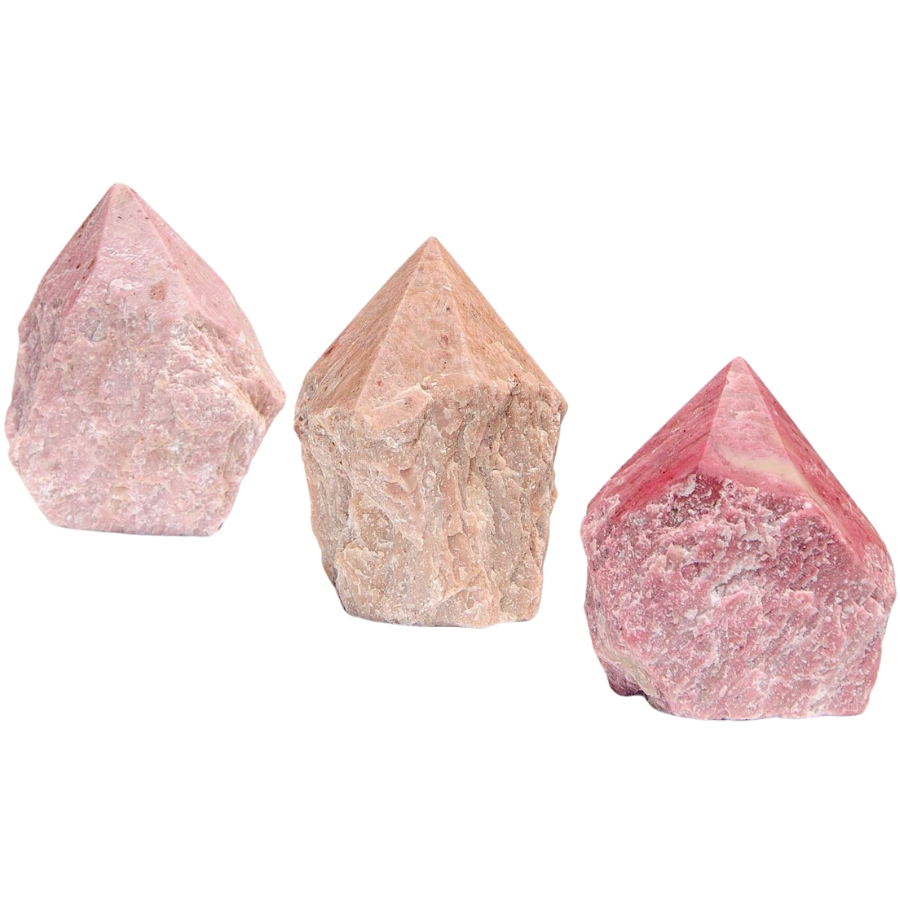
Pink jasper exudes delicate charm with its soft pink hues that are often interwoven with cream and beige tones.
During its formation, minerals carried by water seep through, depositing silica and other elements that give rise to the lovely shades and patterns of pink jasper.
Due to their unique patterns, some pink jasper varieties are nicknamed “landscape jasper”. The formations within these stones resemble miniature landscapes.
Because of its beauty, this gem is often incorporated into jewelry and ornamental pieces, bringing a touch of elegance to various designs.
Where you can find pink jasper
Celebrated for its soft beauty, pink jasper is commonly found in various locations. Idaho’s Bruneau Canyon, as well as Oregon’s Biggs Junction area, have significant deposits of this gem.
White Jasper
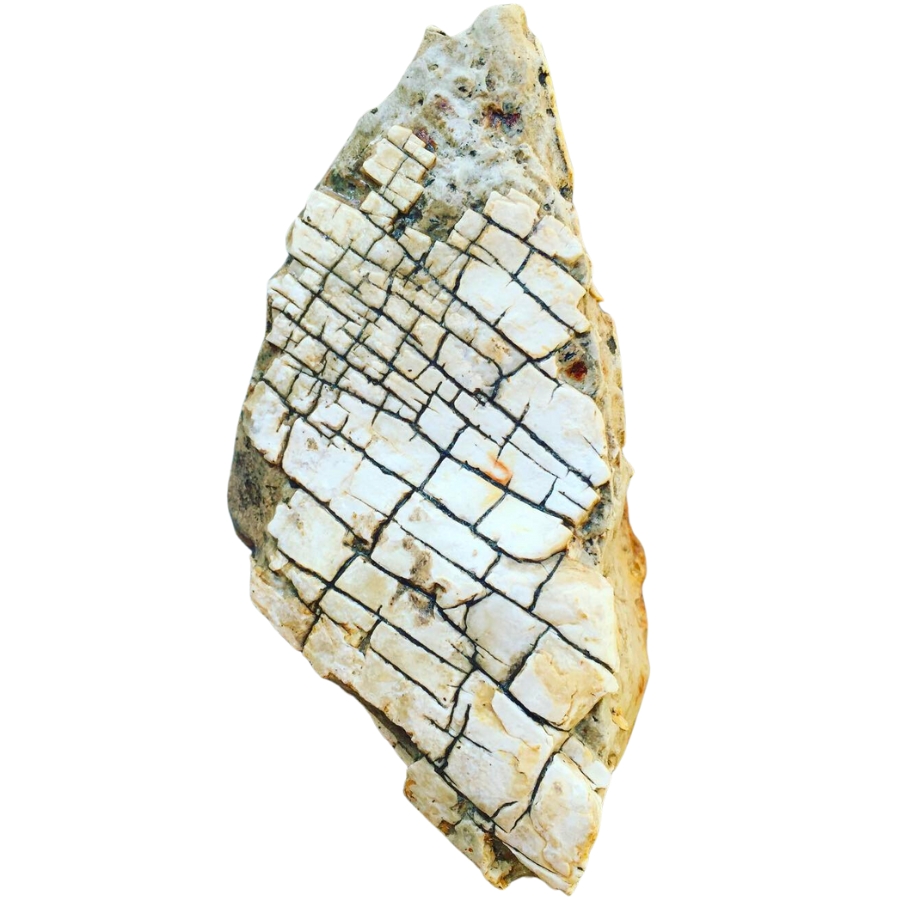
White jasper boasts a pristine appearance with its milky, ivory tones. This elegant stone forms through the slow process of sedimentation.
In ancient times, white jasper was believed to bring calmness and tranquility.
Some historical sources suggest that it was used to craft protective amulets, symbolizing purity and serenity for the wearer.
Its simplicity and versatility are what make white jasper interesting. The absence of vibrant colors allows it to complement a variety of jewelry designs and artistic creations, adding a touch of sophistication.
Valued for its clean and neutral aesthetic, it’s often chosen for those seeking a gem that effortlessly blends into diverse styles.
Where you can find white jasper
If you’re looking for a gem that symbolizes pure elegance, white jasper is for you. Among the places you can explore are the Bruneau Canyon and the Owyhee Dam area.
Gray Jasper
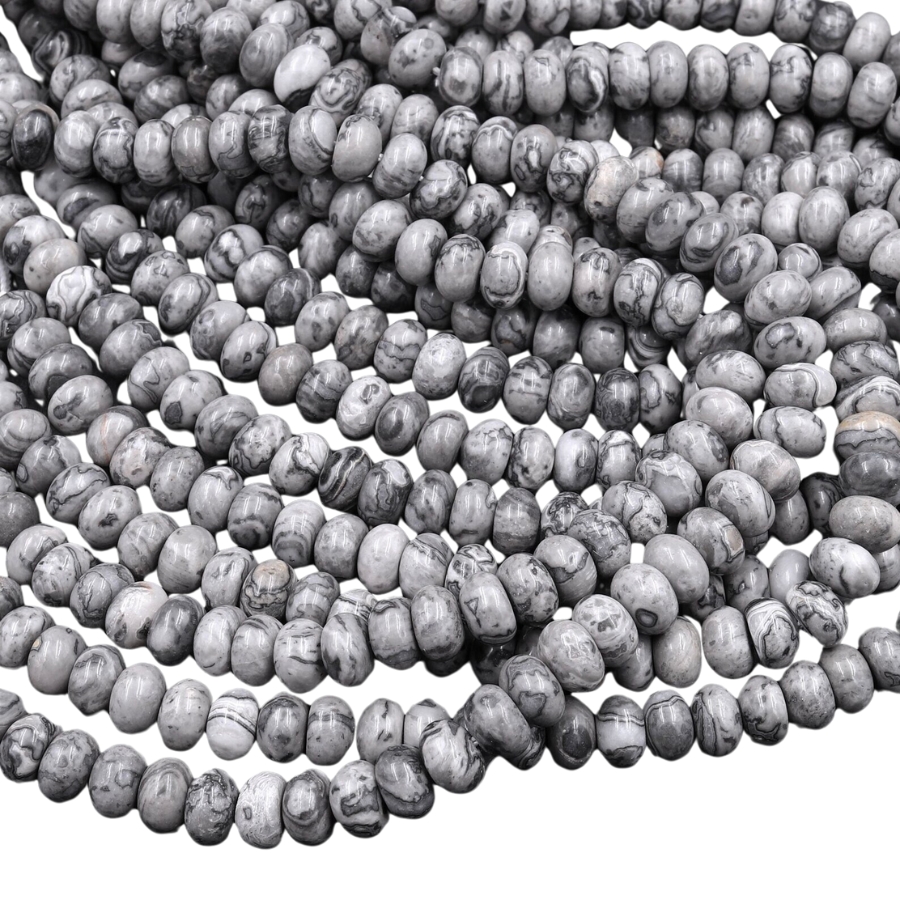
As a stone of understated beauty, gray jasper showcases a palette ranging from soft silver to deep charcoal.
Its uniqueness lies in its muted elegance. Its neutral color allows for versatile applications in jewelry and artistic creations.
With its calming shades, gray jasper was historically believed to instill a sense of tranquility and resilience. Some ancient cultures associated it with weathering life’s challenges.
Today, this type of jasper still often symbolizes stability and balance in design. Whether in minimalist jewelry or decorative pieces, it brings a refined touch, emphasizing the beauty in simplicity.
Where you can find gray jasper
You can search through the nooks and crannies of Bruneau Canyon and Owyhee Dam area to find gray jaspers. You can also explore regions in Oregon where this gem naturally occurs.

